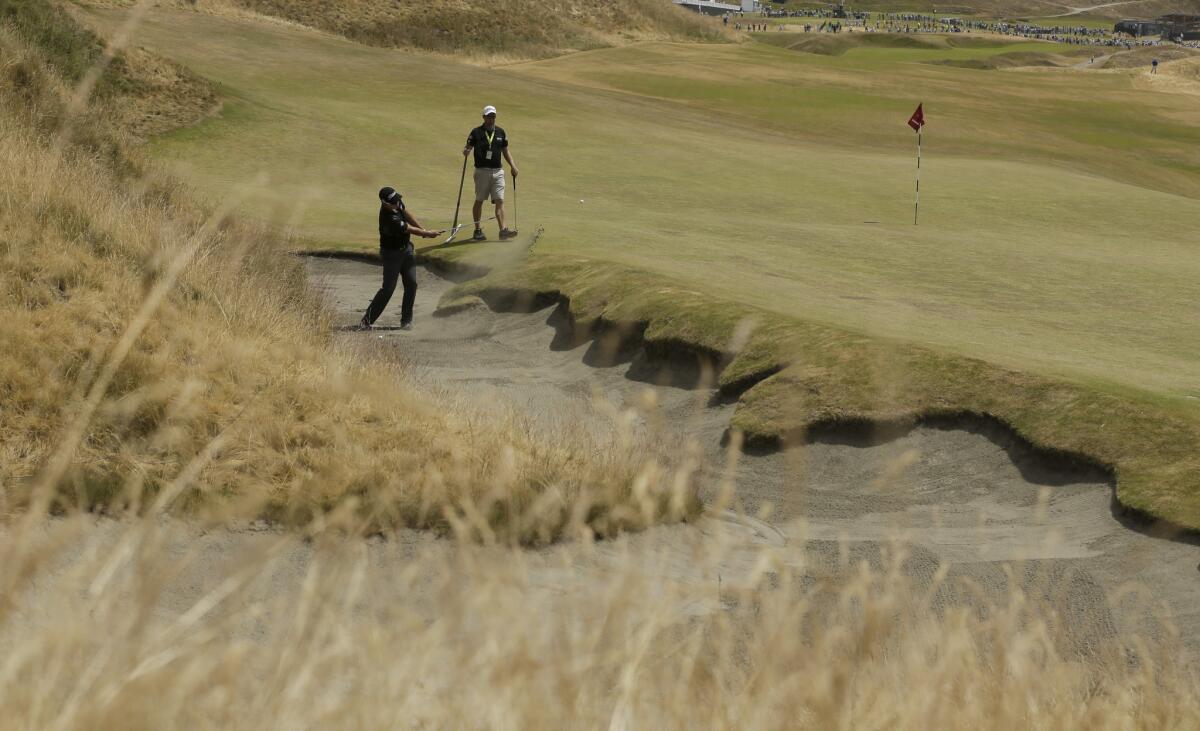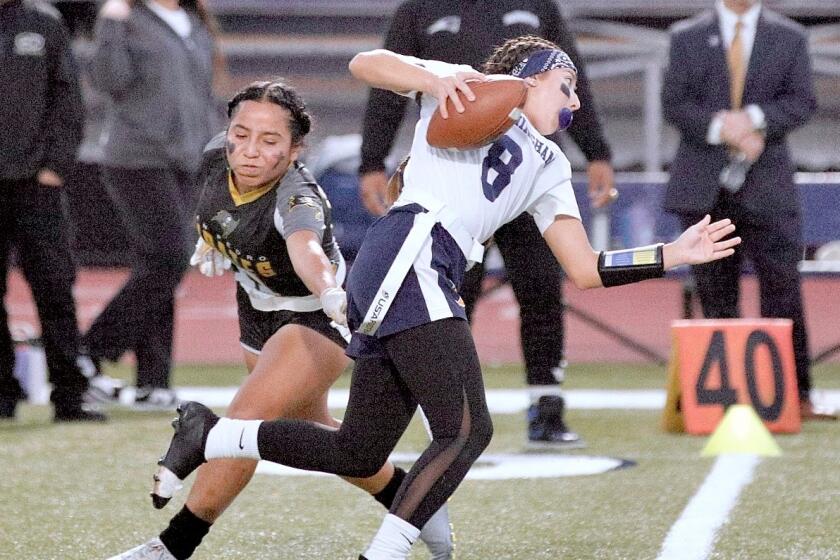Designer believes better players will enjoy Chambers Bay

Byeong-Hun An, of South Korea, hits out of the bunker on the first hole during a practice round for the U.S. Open golf tournament at Chambers Bay on Monday
Many of the world’s greatest golfers have begun their U.S. Open practice rounds at Chambers Bay, and their opinions have begun rolling in.
On site to watch and listen is course designer Robert Trent Jones Jr. And while Jones seemed interested in the opinions that will be offered this week, he also seemed confident about the links course that he has shaped along the shore of South Puget Sound.
“What I’m trying to hear is their mental attitude as well as their acceptance of the test presented to them by the USGA at championship conditions; so it’s not just the course itself,” he said. “... Am I concerned about the criticism? Of course, I am. I like to learn from them as much as possible. But generally speaking, the golf course is never finished; it’s a work in progress.”
The handful of pros who addressed the media Monday were largely complimentary.
Asked to describe the course in a single word, reigning Masters champion Jordan Spieth picked “inventive.” He singled out No. 9 as “one of the cooler holes that we’ll play all year.”
Ryan Moore of Puyallup predicted this will be one of those courses that the more you play, the more you enjoy, concluding, “It’s a fun golf course.”
Jason Day’s first comments addressed the course’s distinctiveness: the elevations changes, the elasticity of the way holes can be reshaped. “It’s obviously not a traditional U.S. Open course,” he added.
That it is not, USGA executive directed agreed, noting it is the first in the Northwest, and a links course down to its tee-to-green fescue grass.
Still, Jones said the architecture is “fairly simple,” with no trees or water coming into play. Therefore he said the course must present its challenges in other ways. He mentioned length “a course as big as the Pacific Northwest” uneven tees and strongly contoured greens.
“The better players like this because it separates the big boys from those who are a little bit not psychologically ready for the test,” he said. “... I think the new elements that we’ve added to our course are in keeping with our time. And the better players adapt to it. ... Those who adopt it, embrace it, they like it. They’re telling me that they enjoy it. Those who are uneasy with the newness of it, we’ll listen to them, but they probably won’t make the cut.”
More to Read
Go beyond the scoreboard
Get the latest on L.A.'s teams in the daily Sports Report newsletter.
You may occasionally receive promotional content from the Los Angeles Times.










